
unique paths through temperature and humidity conditions result in unique shapes of snowflake crystals
Source: National Oceanic and Atmospheric Administration (NOAA), How do snowflakes form? Get the science behind snow

unique paths through temperature and humidity conditions result in unique shapes of snowflake crystals
Source: National Oceanic and Atmospheric Administration (NOAA), How do snowflakes form? Get the science behind snow
When temperatures drop below freezing, precipitation can fall in the form of snow. Snow which accumulates on the ground typically melts slowly, so a higher percentage of snow recharges groundwater compared to the same amount of precipitation that falls as rain. As the climate gets warmmer, denser snowflakes are forming in the atmospher. They fall faster, creating heavier-than-average snowstorms.
Snowflakes are famously unique. Some are flate plates with arms that look like tree branches, "dendritic" in shape. Others are shaped like columns, sometimes with attachments on the enfds that resenbvle weightlighting bar-bells. Flakes shaped like needles result in the powdery snow beloved by skiers. Most flakes, however, are irregular shapes created as 100,000 tiny droplets of water freeze onto a crystal over 30-45 minutes.
The distinctive crystal shapes are determined by the unique path each frozen water molecule takes before reaching the ground:1
The upper reaches of mountains in Virginia are colder than valley floors, the Piedmont, or the Coastal Plain. Precipitation at higher elevations can fall as snow, while lower the same clouds can generate raindrops hitting the ground.
Though Grayson County is known as the "roof of Virginia," the jurisdiction with the greatest annual snowfall is on the Appalachian Plateau. Between 1985-2015, the average snowfall in Wise County exceeded 52 inches annually.
On the planet, southern Chile receives the most snow. About 2,000 inches falls annually on the 10,000' high Andes Mountains, the first landmass encountered by the westward-flowing jet stream that gathers moisture as it crosses the Pacific Ocean. The snowiest location in North America is in Alaska. The Chugach Mountains there get around 1,250 inches annually.2
Virginia Beach gets snow, but not often enough to invest in snow-removal equipment that could clear it away quickly. The city estimates it would need to purchase 300 more trucks to plow snow from every neighborhood. Plowing is feasible only when snow reaches a depth of two inches, and Virginia Beach anticipates that a fleet of snowplows would sit idle for years between storms that required plowing the streets.
When the city did get a 13-inch snowfall in March 1980, the governor mobilized the National Guard. It cleared neighborhood roads, but in the process the equipment broke side mirrors off parked cars, cracked windshields, and created piles of snow that blocked driveways. Rather than repeat that experience, the city has a snow removal plan based on using its own equipment to plow primarily the major highways. The National Guard was not mobilized for the storm that dropped 13 inches of snow in February, 2025.3
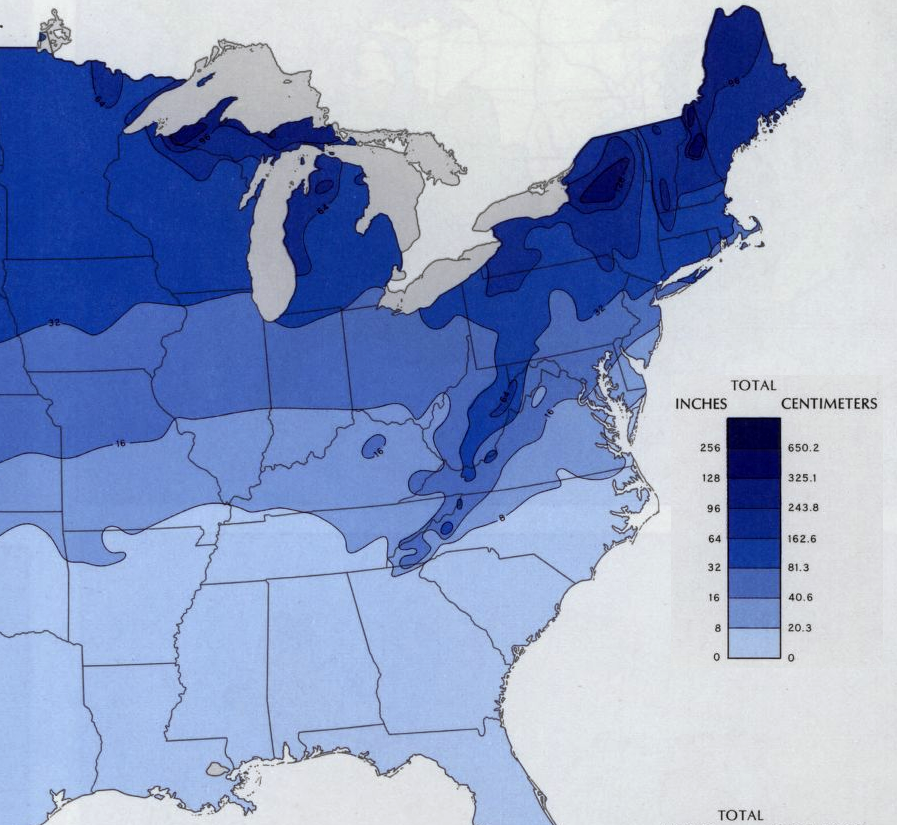
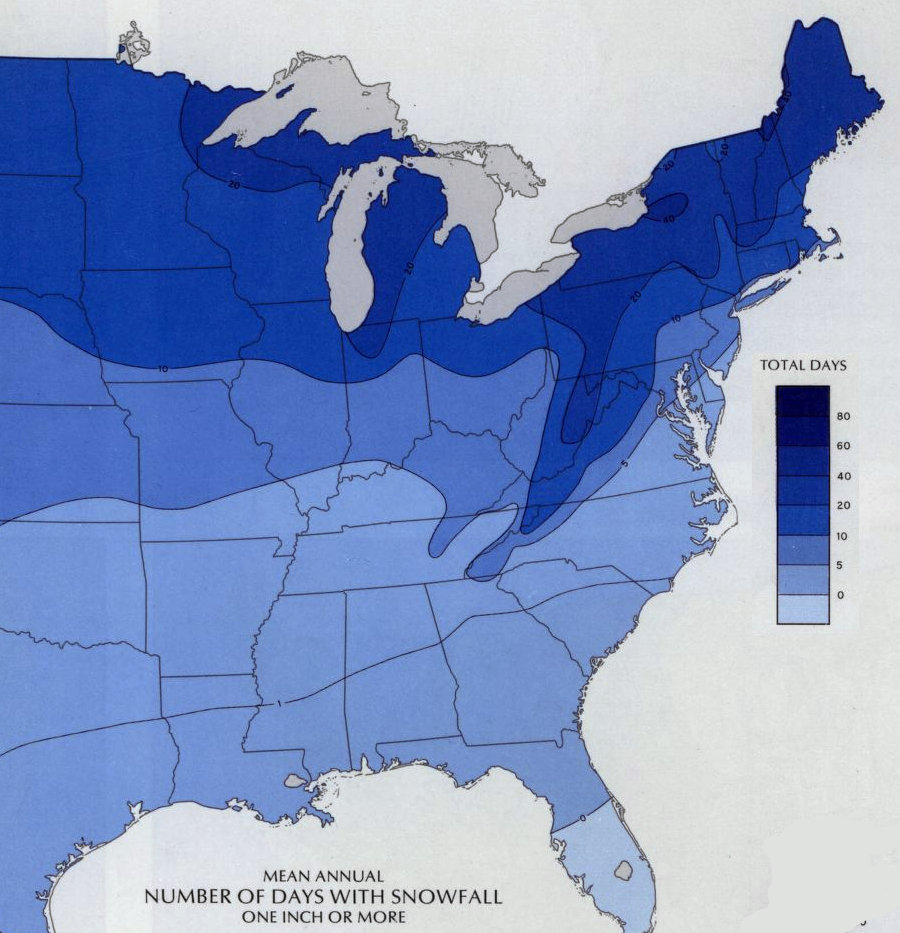
counties closer to the Atlantic Ocean get fewer inches and fewer days of snow each year
Source: Library of Congress, "The national atlas of the United States of America," Snowfall
Maximum snowfall in one day was over 36 inches at Round Hill in Loudoun County, in 2006. Only three other localities have received over 30 inches of snow in one day since documentation of climate records began at the end of the 19th Century.
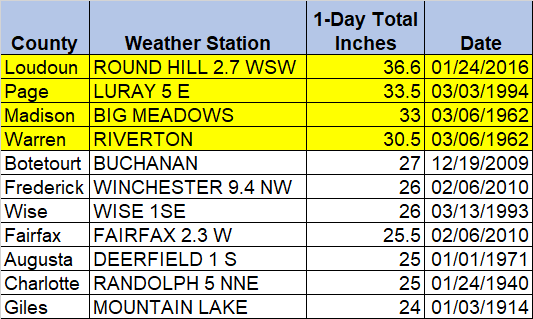
the record Virginia snowfall within one day was over three feet at a Loudoun County weather station in 2006
National Oceanic and Atmospheric Administration (NOAA), Snowfall Extremes
Most major snowstorms last two-three days. Big Meadows in Madison County holds the Virginia record for receiving the most snow over a three-day period. In the Blizzard of 1996 (January 6-8, 1996), 49" of snow fell.
Only two other places in Virginia have experienced over 40 inches of snow since documentation of climate records began at the end of the 19th Century. Those were Luray in Page County in 1994, and Riverton in Warren County in 1962. Big Meadows, Luray, and Riverton were also the other three places to receive over 30" of snow in just one day.4
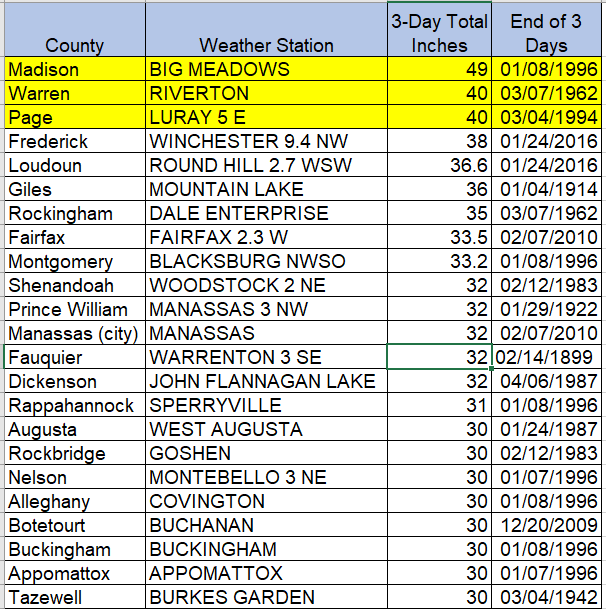
only Madison, Warren and Page counties have experienced three-day snowfalls exceeding 40 inches
National Oceanic and Atmospheric Administration (NOAA), Snowfall Extremes
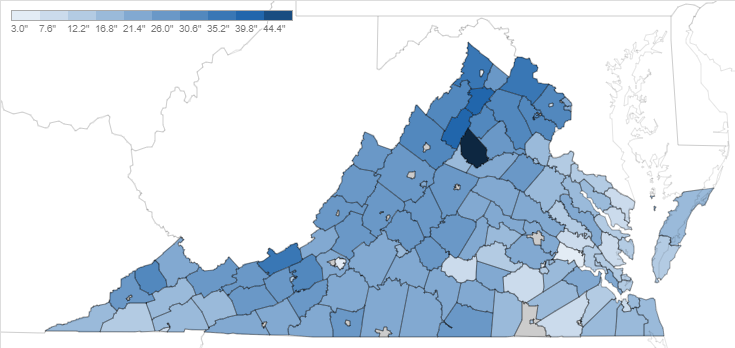
three-day snowfalls in the Coastal Plain are less than west of the Fall Line
National Oceanic and Atmospheric Administration (NOAA), Snowfall Extremes
The Blizzard of 1996 from January 6-8, 1996 shut down nearly all movement in Northern Virginia during the Saturday-Monday when snow fell. closing many schools and facilities for a week. The storm ranked as a "5" on the Northeast Snowfall Impact Scale.. At Dulles International Airport, 24.6 inches were recorded.
After a cold week, the snow melted rapidly on just one warm day. The resulting flood is counted as #6 on the list of major floods at Great Falls.5
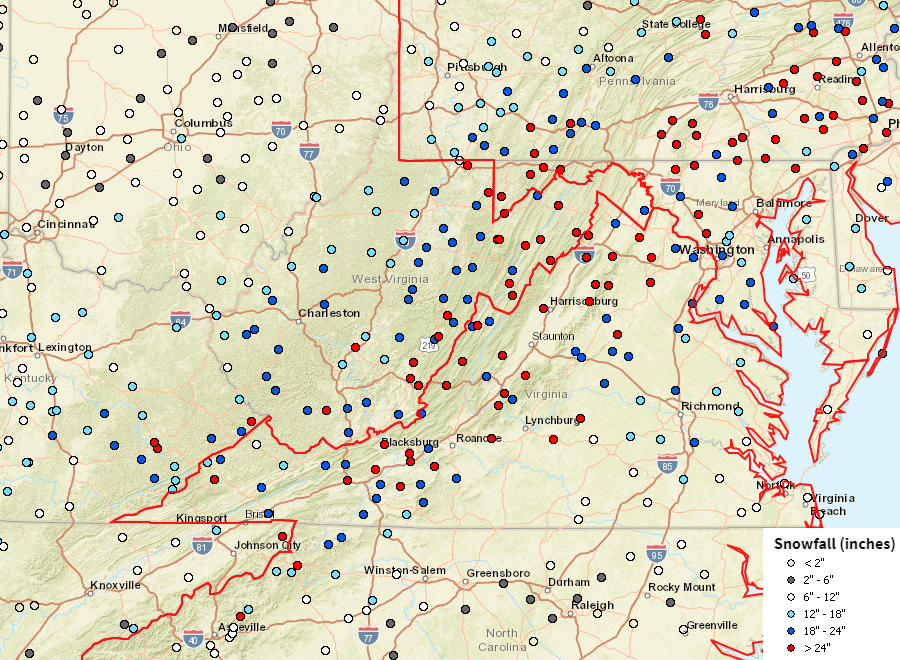
the three-day Blizzard of 1996 (January 6-8, 1996) dropped over two feet of snow in many Virginia locations
National Oceanic and Atmospheric Administration (NOAA), Regional Snowfall Index (RSI) Map
The Snowmageddon event on February 5-6, 2010 also paralyzed Northern Virginia. At Dulles, 32.4" fell. A year later, one resident shared the worst memory of the experience:6
All those snowstorms may pale in comparison to the Washington-Jefferson snowstorm on January 26-28, 1772. The event, before the start of reliable modern records by the War Department in 1870, was documented by Thomas Jefferson and George Washington.
Jefferson wrote in his Garden Book on January 26, 1772 that the deepest snow ever seen in Albemarle County had reached three feet deep. At Mount Vernon, Washington recorded that he now began on the evening of the 26th. By the 29th, he too estimated the snow to be three feet deep.7
Source: Thomas Jefferson's Monticello, Thomas Jefferson on the Winter of 1772
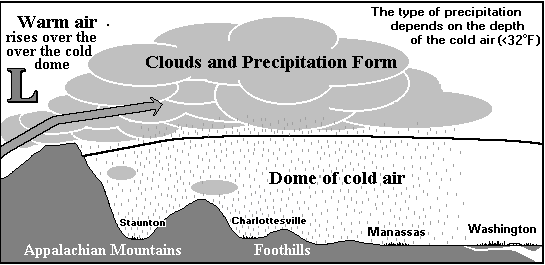
sleet occurs in Northern Virginia when rain falls through a shallow mass of cold air blocked from moving west by the Blue Ridge
National Weather Service, Mid Atlantic Winters
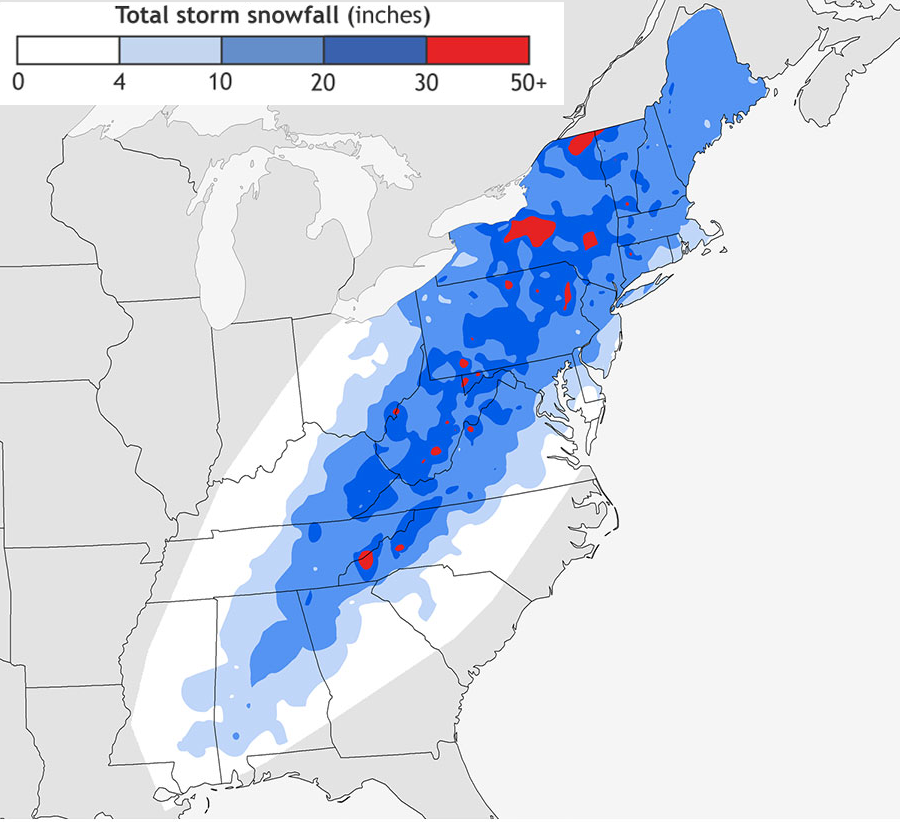
the 1993 "Storm of the Century" affected the western half of Virginia primarily
National Oceanic and Atmospheric Administration (NOAA), On This Day: The 1993 Storm of the Century
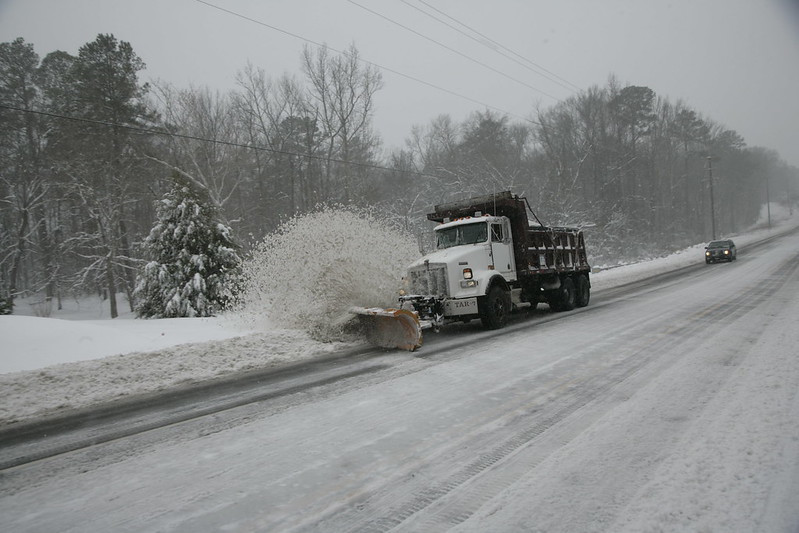
the Virginia Department of Highways plows snow from public roads in all counties except Henrico and Arlington
Source: Virginia Department of Transportation, Blizzard of '09
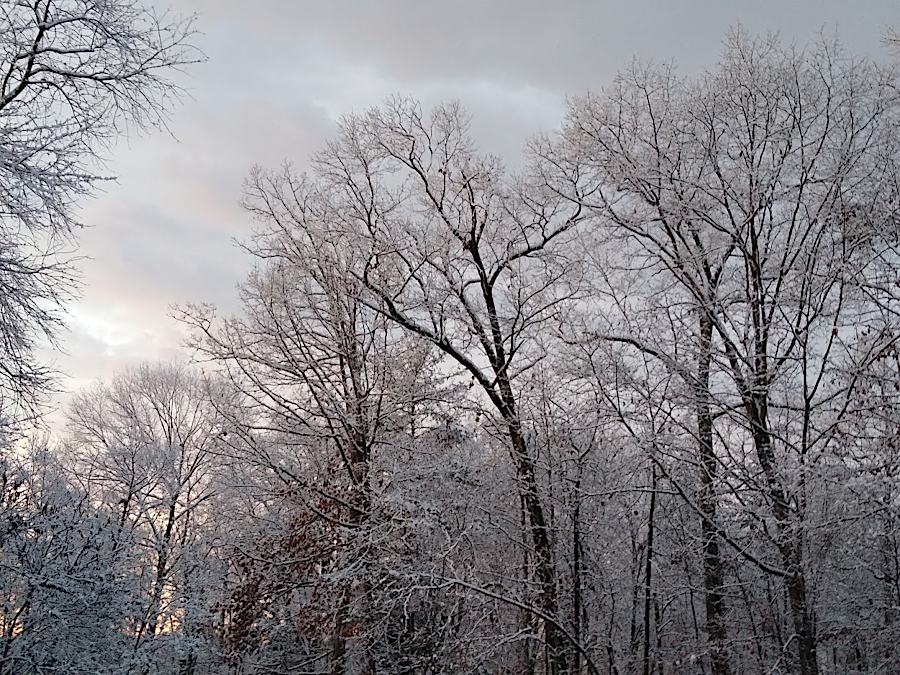
snow melts slowly, recharging groundwater aquifers
wise,
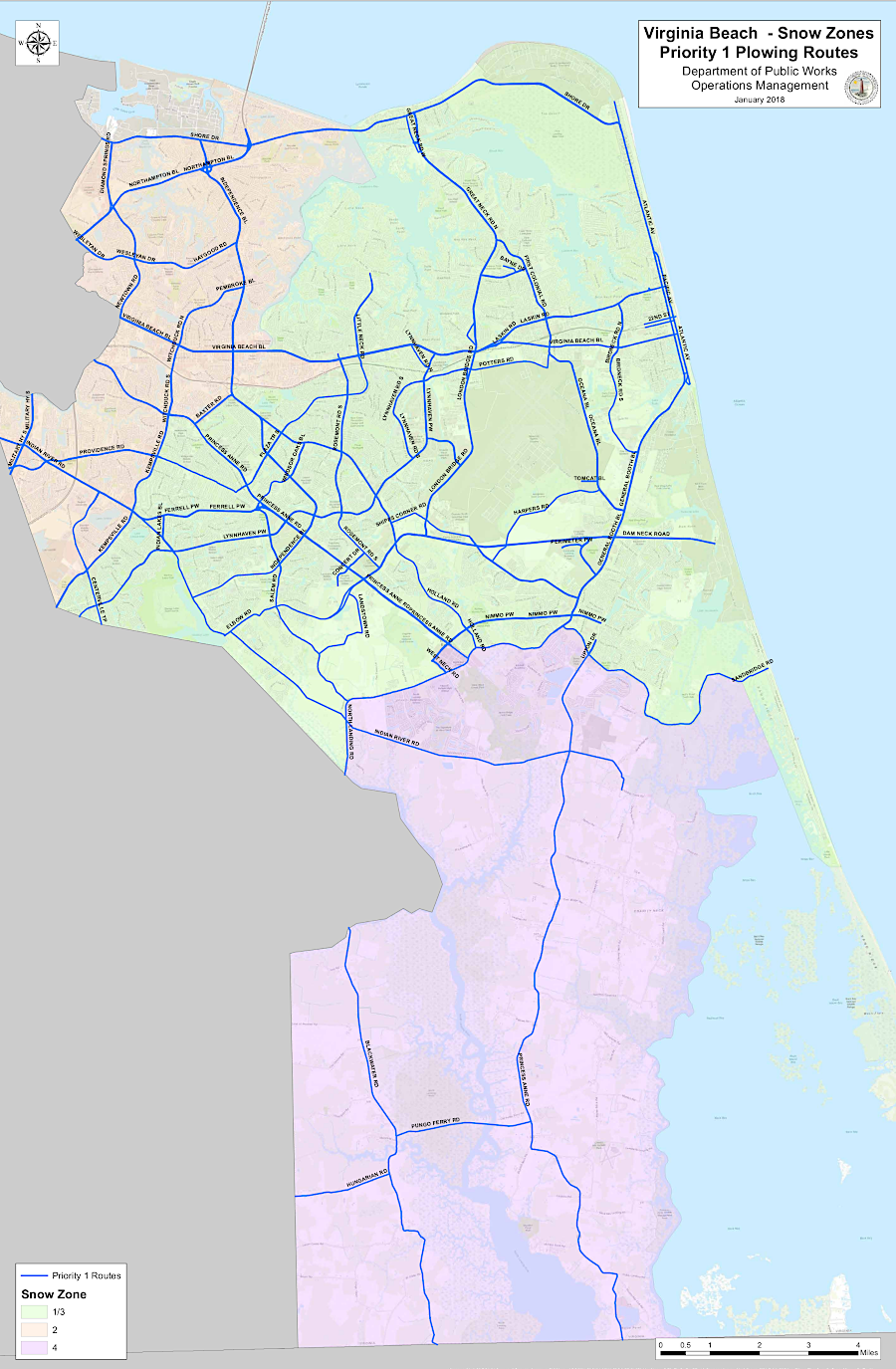
Virginia Beach's snow removal plan focuses on plowing major routes, not neighborhood roads
Source: City of Virginia Beach, Citywide Priority 1 Plowing Routes